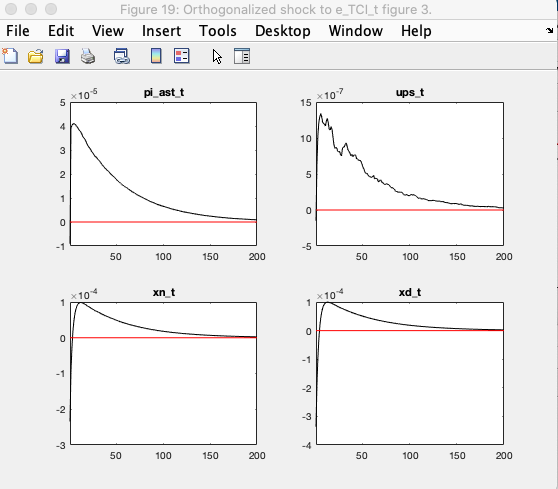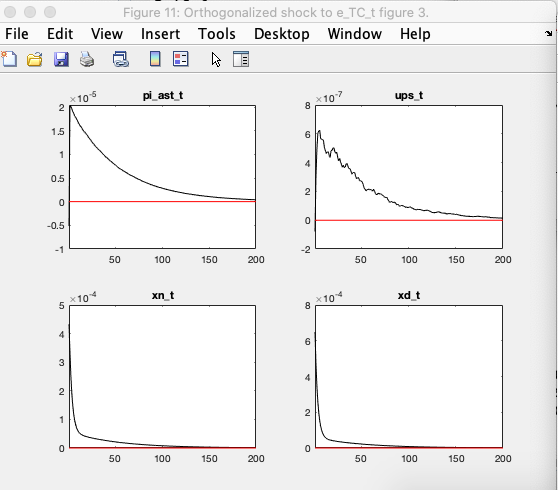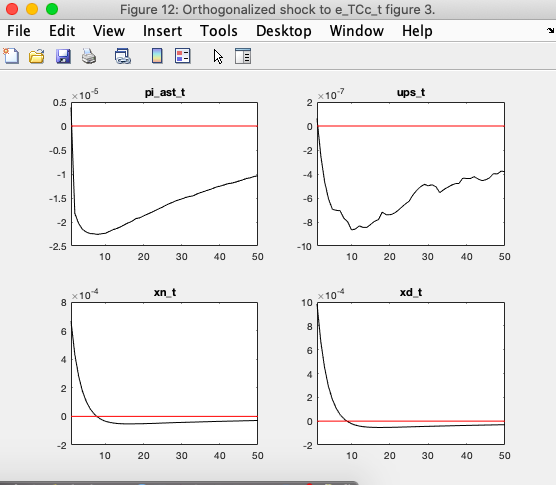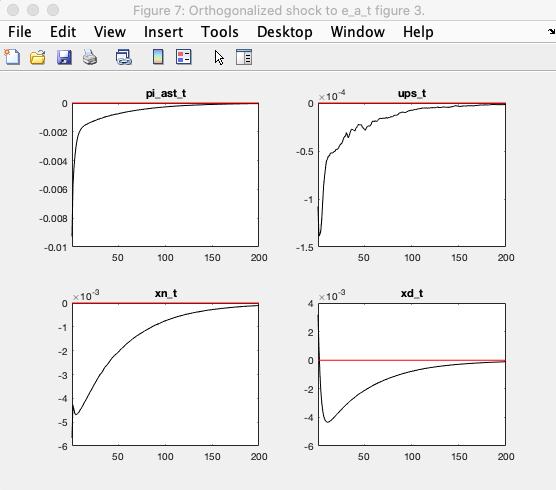I’m trying to simulate a model with three main components: transaction costs, investment adjustment costs, and Calvo price stickiness. These are my main three sources respectively: Schmitt-Grohé and Uribe (2004), Sims (2015) (which actually comes from NK’s Christiano, Eichenbaum, and Evans
(2005)) and Sims (2017) (which is a standard Calvo NK model with no capital).
When running stoch_simul() I get:
There are 6 eigenvalue(s) larger than 1 in modulus
for 8 forward-looking variable(s)
The rank condition ISN'T verified!
From model_diagnostics:
MODEL_DIAGNOSTICS: No obvious problems with this mod-file were detected.
I suspect that the problem might come from omitting one relevant equation by including a redundant one. My initial guess was that as I firstly set-up the mod file, there was not an explicit equation for the marginal cost mc_t, since now I have a FOC for the investment decision (from the Investment Cost part), then I combined Euler equation (3) with Investment FOC (2) through mu_t(+1), and equation (2) took the place of an explicit expression for mc_t. The steady state gets solved correctly, but I still get problems with BK conditions.
(UPDATE 2) To be more specific, the problem I see is that I have an additional FOC from HH’s problem which is: \frac{\partial L}{\partial I_t}=0, which introduces another multiplier \mu_t, and is associated with the constraint of the investment process (with adjustment costs as in CEE (2005)), and in the other hand the FOC \frac{\partial L}{\partial k_t}=0 which constitutes the Euler equation. The specific implied question is if I should combine both in an unique equation.
Also if that’s is not the root of the problem I’d be very thankful to hear some clue about it.
(Also, a weird think that I noted is that despite computing correctly the steady state, in the residual of equation (15) it’s shown a non-zero residual, why is that?)
Thanks!
UPDATE 1: Using the other implicit definition of marginal cost (that comes from the lagrange mult. corresponding to minimization problem of intermediate firms): mc_t = \frac{1}{a_t}\left(\frac{r_t}{1-\alpha}\right)^{1-\alpha}\left(\frac{w_t}{\alpha}\right)^{\alpha} I get a non-zero residual in this equation’s steady state. Then maybe this is suggesting the problem comes from here. Nevertheless, I’d still appreciate some guidance on how to involve all relevant equations when having the mentioned set-up.
PD: Note that in my model I defined: y_t(j)=a_tk_{t-1}(j)^{1-\alpha}n_t(j)^\alpha.
tc_calvo_sgu_steadystate.m (3.3 KB)
tc_calvo_sgu.mod (7.4 KB)
vI_steady.m (288 Bytes)



